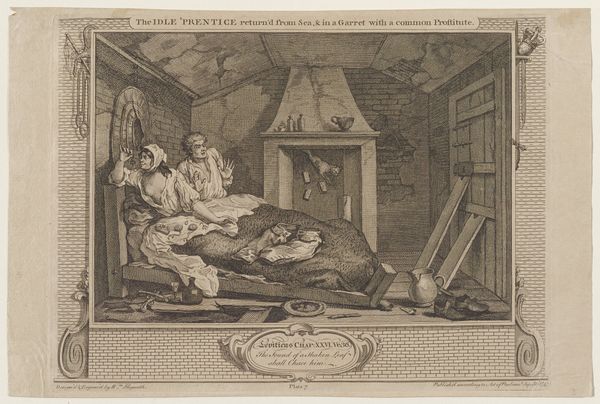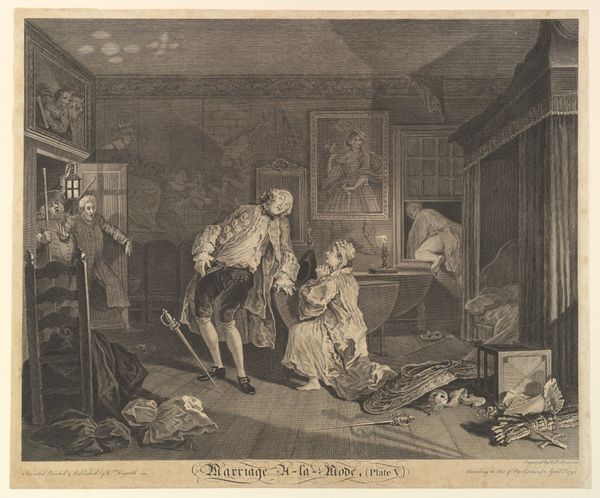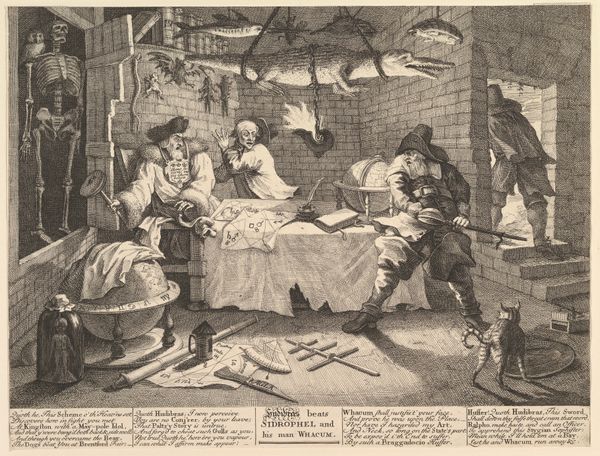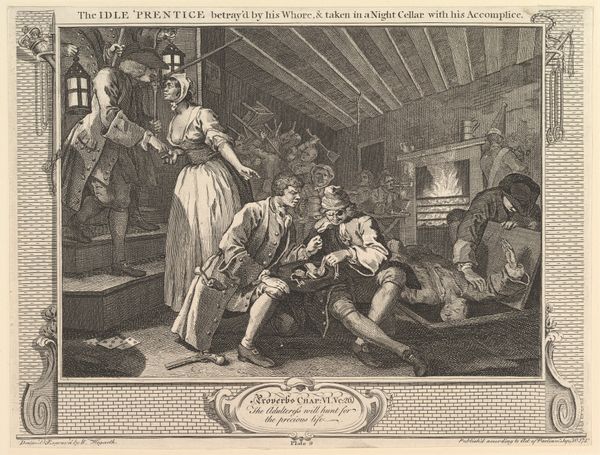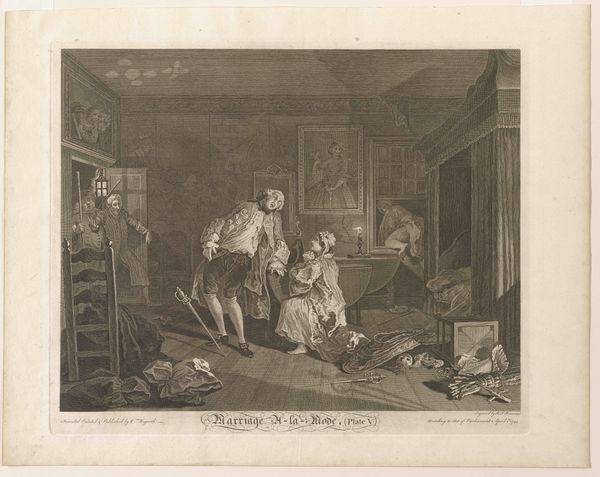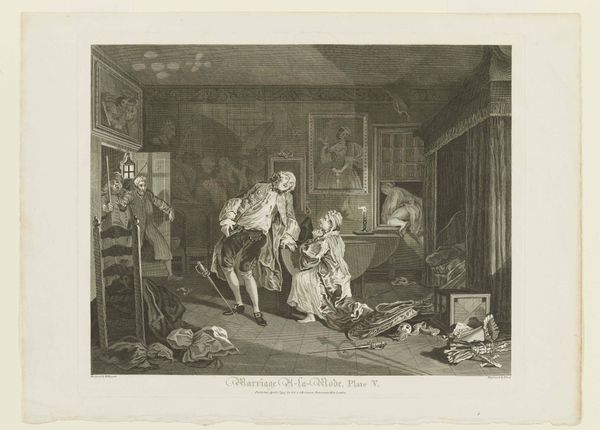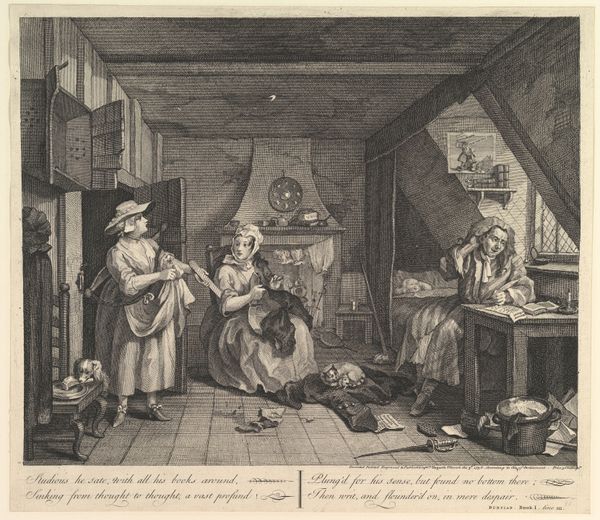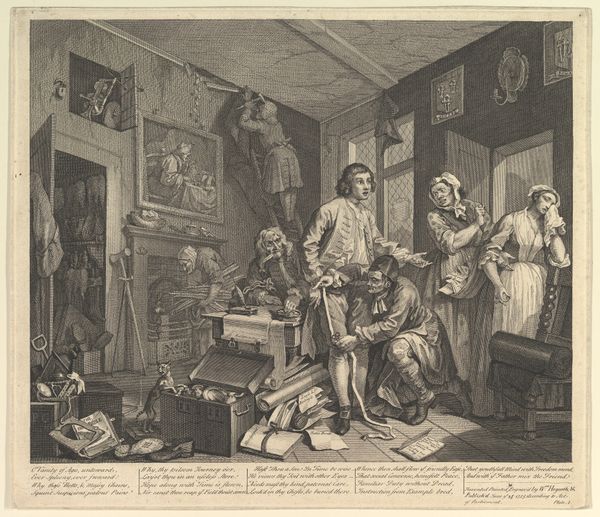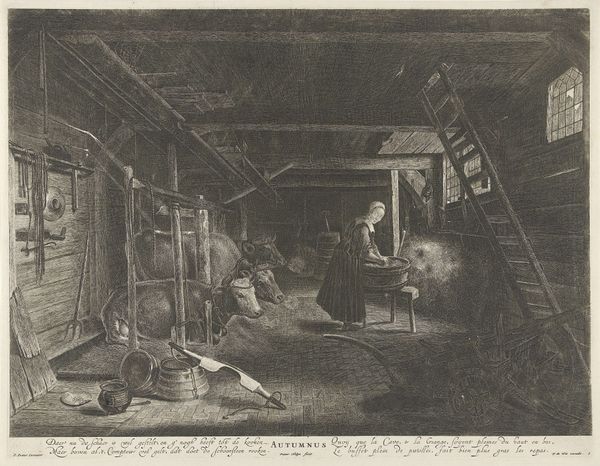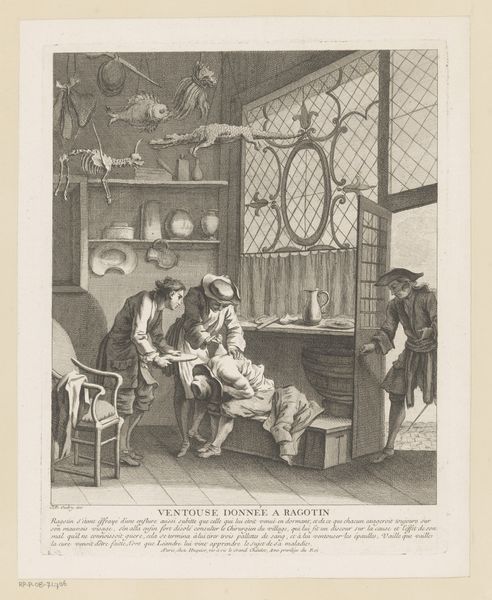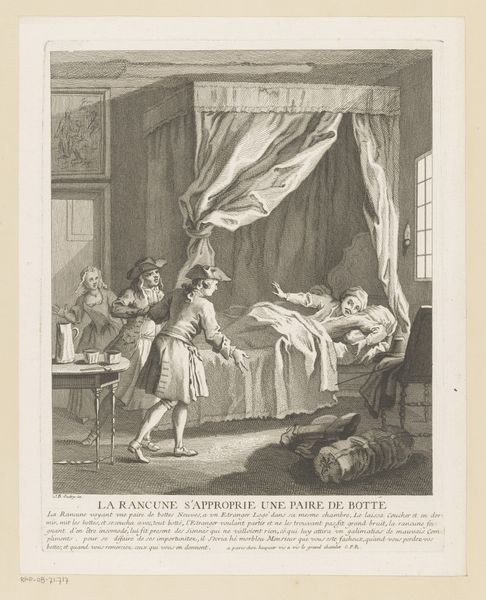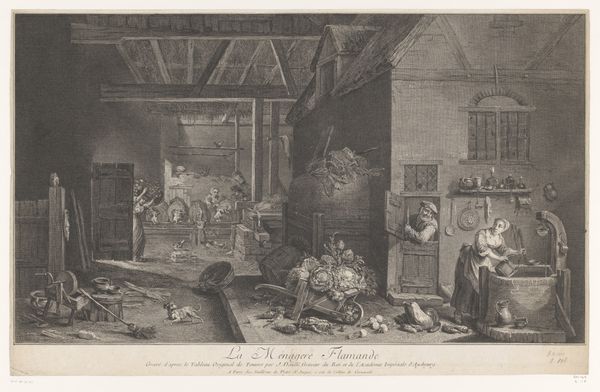
The Idle 'Prentice Returned from Sea and in a Garret with a Common Prostitute: Industry and Idleness, plate 7 1747
0:00
0:00
drawing, print, etching, engraving
#
drawing
#
narrative-art
# print
#
etching
#
genre-painting
#
history-painting
#
engraving
Dimensions: sheet: 10 5/16 x 13 5/8 in. (26.2 x 34.6 cm)
Copyright: Public Domain
Curator: This is plate seven of William Hogarth's "Industry and Idleness" series, specifically, "The Idle 'Prentice Returned from Sea and in a Garret with a Common Prostitute." It was created in 1747, employing etching and engraving. Editor: Well, immediately the overwhelming impression is one of disarray. A cramped, unsettling space…almost claustrophobic in its rendering of a fall from grace. Curator: Absolutely. Hogarth uses narrative to depict societal issues, offering a moralizing tale for apprentices in 18th century London. The series contrasts the success of the industrious apprentice with the downfall of his idle counterpart. Here, we see the latter hitting rock bottom after returning from sea. Editor: The details in this "garret" are particularly striking—look at the debris under the bed and the general poor quality of everything around them. Hogarth isn't just telling a story of moral failing, but commenting on class, labor, and the lived reality of poverty through the tangible objects he depicts and also I noticed that many details are squeezed into the picture in a style that remembers the 17th century genre. Curator: Precisely. He makes this clear connection between moral and material circumstances, echoing wider societal debates on poverty and social mobility, or the lack thereof. Consider the socio-political implications. Editor: I wonder, too, about the process. The precision of the lines suggests meticulous labor, which highlights the irony that the idle apprentice ended up here nonetheless. How many prints would he have produced from a single plate of this complexity? Curator: He mass-produced them in sets to circulate through a wider segment of the population than could have afforded painted artwork, further imbuing art with a more democratic sensibility in Britain. The fact that the subject matter revolves around moral character gave Hogarth’s entrepreneurial operation more gravitas with collectors, investors and government institutions. Editor: That mass production aspect really underscores its social impact then, making the narrative accessible and driving home the work’s intended message on industry and social consequence, and for many today a depiction of the life and the poor quality of some 18th century works, contrasting starkly with fancy interiors and fine furniture. Curator: Indeed. Hogarth's commentary through imagery provides a telling view into his era's values. Editor: Seeing this in detail, it makes the story even more unsettling; it reminds us that things have been socially challenging for many a long time.
Comments
No comments
Be the first to comment and join the conversation on the ultimate creative platform.
